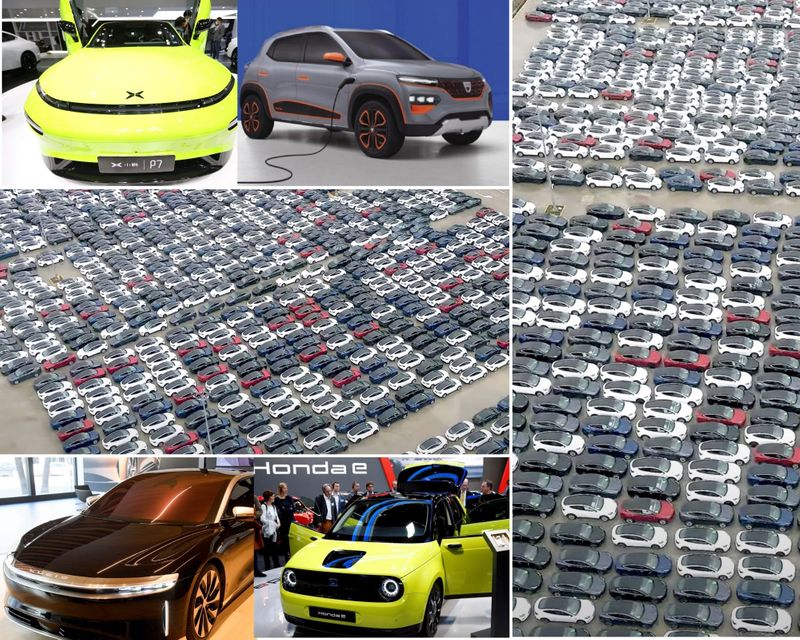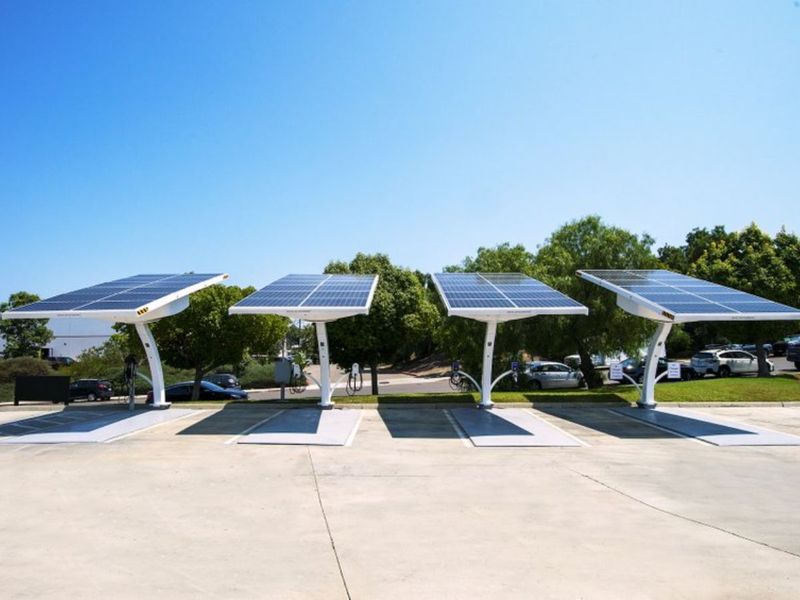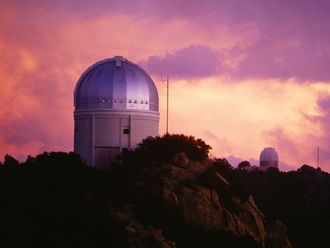
The United States is poised for a surge in electric vehicles (EVs) and heat pumps, but its aging power grid may not be ready. Experts estimate investments ranging from $3.5 to $5 trillion are needed by 2030 to meet the expected demand.
Currently, there are 2.44 million electric vehicles registered in the US (July 2024 data), with California having the highest EV adoption rate (2.5 per cent).
This would mean that an additional 2 million EVs, each costing a minimum of $1,700 per vehicle in terms of electricity generation and distribution, would entail a total investment of a whopping $3.4 trillion, at the lower-end of the National Grid estimate.
At the top-end of this estimate: it's about $5 trillion.

One study prepared by energy analytics company Kevala for California Public Utilities Commission forecasts that California alone may need to invest up to $50 billion by 2035 to upgrade distribution grids for EV charging.
Rising electricity demand
Increased EV adoption, along with electrification of heating and cooling systems, are projected to significantly increase electricity demand.
The power grid — a vast network of electricity generators, transmission, distribution — is a 140-year old technology started by Thomas Edison in 1882.
Forecasts predict a 14-19 per cent surge in US power demand by 2030 and 27-39 per cent by 2035, compared to a modest 5 per cent increase in the past decade.
• As of 2022, the United States produced approximately 4,271 terawatt-hours (TWh) of electricity.
• The production primarily comes from a mix of fossil fuels (about 60 per cent), nuclear energy (18 per cent), and renewables like wind, solar, and hydropower, which collectively contribute around 21 per cent.
• The US electricity grid is vast, with around 725,000 kilometers (450,000 miles) of transmission lines, according to the International Energy Agency (IEA).
• It complex network of interconnected power plants, transmission lines, substations, and distribution lines is crucial for delivering electricity across the country, connecting generation facilities with consumers.
• The US grid is divided into three major sections: the Eastern Interconnection, the Western Interconnection, and the Electric Reliability Council of Texas (ERCOT).
• This infrastructure ensures reliable power supply for millions of consumers.
Grid challenges
The key challenge: How the US could match the EV boom with a comparable boom in grid infrastructure. These challenges can be broken down into the following:
Overload Risk:
Without substantial upgrades, the growing demand could overload the grid, leading to disruptions and hindering EV adoption.
Transmission bottleneck:
High-voltage transmission lines are crucial for transporting renewable energy sources like wind and solar to areas of need. However, new line construction faces bureaucratic hurdles and slow permitting processes.
Financial concerns:
Grid upgrades are bound to be costly, which would eventually pinch end users' pockets. Estimates suggest grid investments for EV charging could range from $1,700 to $5,800 per vehicle by 2030. A study by Kevala forecasts California alone may need $50 billion for grid upgrades by 2035.
Balancing costs and benefits:
Utilities need to balance the high cost of upgrades with the revenue generated from selling electricity to EVs.
And it's not clear if the US ready to spend anywhere near this amount, even at the lower end of the estimate. Moreover, building the high-voltage, interstate transmission lines that are key to greening the US power grid poses a bureaucratic nightmare, given all the utility and regulatory agencies involved.
Potential solutions
The good news: This is a known problem. And there's a solution.
The bad news: It is also a very hard problem to solve, say experts. Realistically, permitting can take a decade or more.
This is because of the way that power has been generated since mainland America started building electric grids based on Edison's formula. Moreover, permitting at the rate it's going can take a decade or more.
Following are some of the possible solutions floated:
Strategic investments:
The US Department of Energy has set an ambitious target of creating a 100 per cent carbon-free electric grid by 2035. It's a strategic target. However, with electricity demand increasing every year, that’s going to require a massive buildout of both renewable energy resources and grid infrastructure. Investing in grid upgrades based on data-driven analysis of EV adoption trends can ensure targeted and cost-effective expansion.
Renewable energy integration:
This is the biggest challenge yet, though one that is doable. Experts say it requires greater cooperation among states and local governments. Expanding renewable energy sources like wind and solar, and hooking them up with mega batteries, will be crucial for meeting increased demand while reducing carbon emissions.

Battery storage:
Megawatt-scale, multi-day battery energy storage systems (BESS) can help stabilise the grid by storing renewable energy and providing backup during peak demand periods.
While, it’s easy to site coal and natural gas plants close to population centres and the best solar and wind resources are usually more rural, the use of multi-day BESS could avoid the need to build more coal and gas-fired “peaker” power plants, which kick in when demand is high.
These batteries have proven their mettle. For example, Enel's 1.3-GW BESS capacity helped keep the lights on in Texas during extreme weather, by tapping into the state’s wind and solar resources to use clean power. It also keeps energy costs low.
Smart grid technologies:
Advanced technologies that allow for real-time monitoring and management of the grid can optimize electricity distribution and improve efficiency.
Bypass the grid?
It turns out off-grid charging for electric vehicles is a rising multi-billion-dollar industry.
Technology and cost are the main forces driving the rapid advancement of off-grid charging. This trend is similar to Moore's Law, which predicts that computing power doubles roughly every two years. This pattern has persisted since the 1960s.
According to Mika Takahashi, an analyst at IDTechEx, off-grid charging could help bypass the grid entirely. It hits two birds with one stone: It represents a multi-billion dollar market opportunity, creating new jobs, while curbing the need for massive investments in unreliable, fossil fuel-dependent power grids.
The inevitable shift to EVs across all sectors—cars, buses, and trucks—is also being driven by a ban (from as early as 2025) on internal combustion engines (ICE) in numerous countries, which would significantly lower CO2 emissions from land tranport.
180 million EVs
Off-grid EV charging not only decentralises power generation and consumption. It also democratises it.
By 2044, IDTechEx predicts that over 180 million electric vehicles will be sold annually, contributing to a substantial reduction in tailpipe emissions.
Overall emissions depend heavily on the energy mix used for grid electricity. In many regions, fossil fuels like coal and natural gas still dominate this mix. Additionally, some grids are already stretched to capacity, and the added load from electric transportation could lead to blackouts and power supply issues.
According to Juniper Research, the off-grid charging market could play a crucial role in driving a sustainable transportation, easing grid congestion and boosting energy resilience.
Meanwhile, S&P Global Mobility forecasts that the global EV infrastructure, including off-grid solutions, will see a substantial increase, with 70 million chargers expected worldwide by 2030.
These trends indicate that off-grid EV charging is set to be a key component in the broader shift toward electrification and sustainable energy, with both the market size and technological innovations poised for rapid expansion.
• Grid independence: Off-grid charging systems reduce reliance on traditional power grids, ensuring consistent EV charging even during grid failures or load-shedding scenarios, according to the International Energy Agency.
• Environmental benefits: Powered by renewable energy sources like solar, off-grid charging reduces carbon emissions and supports cleaner transportation.
• Cost savings: Avoiding the costs associated with grid electricity and potential grid upgrades, off-grid systems offer long-term savings for EV users.
• Energy security: Off-grid charging enhances energy security by diversifying power sources and reducing vulnerability to grid disruptions.
• Scalability and flexibility: These systems can be tailored to specific locations and needs, making them suitable for rural areas, remote locations, or urban settings with space constraints, the agency stated.
Looking ahead
The US Department of Energy’s ambitious goal of a 100 per cent carbon-free grid by 2035 necessitates significant investments in both renewable energy generation and grid infrastructure.
Efficient permitting processes and innovative solutions are key to overcoming bureaucratic hurdles and accelerating grid modernization.
Tesla holds 56.5% market share for EVs sold in the US
Grid investment estimates: The US National Grid estimates that an investment of between $1,700 to $5,800 per vehicle is needed for EV charging by 2030.
Kevala study for California: $50 billion for California grid upgrades by 2035
Electricity demand increase: 14-19% by 2030 and 27-39% by 2035 (projected)
"Power Up New England Project": Received $389 million in DOE funding to improve grid infrastructure and connect more offshore wind power to the grid.








